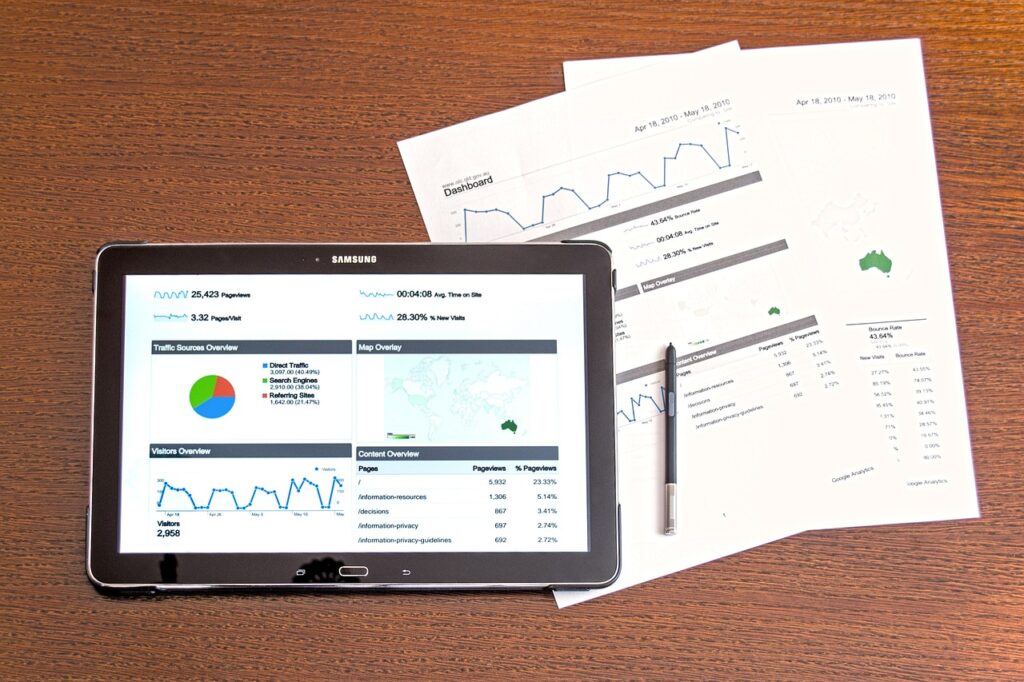
Table of Contents
Introduction
In the modern digital era, companies must be where their clientele is—online. One of the strongest methods of targeting potential clients is by Google AdWords, which is now referred to as Google Ads. It enables companies to showcase their advertisements on Google’s search pages, partner sites, and YouTube, reaching millions of users globally.
What is Google AdWords?
Google AdWords (Google Ads) is a web advertising system created by Google. It enables companies to produce advertisements that are shown on Google Search, Google Display Network, YouTube, and Google Shopping. Advertisers bid on keywords for their products or services, and their ads are shown when users search for those keywords.
How Google AdWords Works
Google Ads follows a Pay-Per-Click (PPC) model, wherein advertisers pay only when a user clicks on their ad. Google has an auction system, in which placement of ads depends on bid price, ad relevance, and quality score. Below is a step-by-step explanation:
- Keyword Research – Companies choose keywords associated with their product or service.
- Creating Ads – Advertisers create interesting ad copies with headlines, descriptions, and URLs.
- Bidding – Advertisers establish a maximum bid per keyword.
- Ad Auction – Google compares bids, ad quality, and projected impact.
- Ad Placement – Top-performing ads show up on Google’s search pages or display network.
- Monitoring & Optimization – Advertisers monitor performance and make the necessary adjustments.

Advantages of Using Google AdWords
- Instant Visibility – In contrast to SEO, which is time-consuming, Google Ads provides instant results.
- Targeted Ads – Ads can be tailored to location, device, language, and demographics.
- Spending Control – Advertisers control how much to spend per day, with bid prices.
- Measurable Outcome – Google Ads offers extensive reporting to measure ad performance.
- Remarketing Potential – Re-target visitors who have already engaged with your site.
- Higher Conversions – As Google Ads targets specific search queries, the conversion is higher.
- Global and Local Reach – Whether you want to target local customers or a worldwide audience, Google Ads gives you the flexibility to do both.
Types of Google Ads Campaigns
- Search Ads – Text ads that appear on Google search results.
- Display Ads – Image-based ads shown on Google’s partner websites.
- Shopping Ads – Product listings for eCommerce businesses.
- Video Ads – Ads displayed on YouTube.
- App Promotion Ads – Aimed at driving mobile app downloads.
- Performance Max Campaigns – Deploys machine learning to optimize across various platforms.
Keyword Research for Google Ads
Keyword research is perhaps the most important step in having a successful Google Ads campaign. Without the proper keywords, your ads won’t find the right people. Here’s how to perform effective keyword research:
- Use Google Keyword Planner – A free tool that gives keyword suggestions and search volume.
- Analyze Competitor Keywords – Examine what keywords competitors are targeting.
- Long-Tail Keywords – More specific and usually have less competition but more conversion.
- Negative Keywords – Remove irrelevant keywords to avoid wasting money on clicks that won’t convert.
Writing Effective Google Ads Copy
Well-crafted ad copy will greatly improve campaign performance. Here are some tips:
- Use Keywords in Headlines – Make the ad useful to the search query.
- Emphasize Unique Selling Points (USP) – What sets your product or service apart?
- Use Call-to-Action (CTA) – Invite users to proceed to the next step (e.g., “Buy Now,” “Sign Up Today”).
- Test Various Ad Variations – Conduct A/B tests to find out which one works best.
Google Ads Bidding Strategies
Selecting the correct bidding strategy is critical to managing ad spend and reaching your campaign objectives. Some of the popular bidding strategies are:
- Manual CPC (Cost-Per-Click) – Enables advertisers to define a maximum cost per click.
- Enhanced CPC – Dynamically adjusts manual bids on the basis of the probability of conversion.
- Maximize Clicks – Google automatically maximizes bids in order to receive as many clicks as it can within the budget.
- Target CPA (Cost-Per-Acquisition) – Tries to receive conversions for a certain cost.
- Target ROAS (Return on Ad Spend) – Maximizes bids for max revenue.
- Maximize Conversions – Employs machine learning to push more conversions.

Google Ads Metrics and Performance Tracking
To maximize ad performance, key metrics should be tracked:
- CTR (Click-Through Rate) – Ratio of individuals who click on your ad after viewing it.
- Quality Score – Google’s grade of your ad relevance, landing page experience, and predicted CTR.
- Conversion Rate – Rate of users who convert on the desired action (e.g., buy).
- Cost-Per-Conversion – What you pay per conversion.
- Impression Share – Frequency of when your ad appears in relation to the number of available impressions.
Remarketing with Google Ads
Remarketing enables you to target users who have already been to your site. Advantages are:
- Higher Conversion Rates – Users who already know your brand are more likely to convert.
- Lower Cost-Per-Click – Remarketing campaigns tend to have lower CPC than standard campaigns.
- Several Ad Formats – Employ display, search, or video advertisements to re-engage previous site visitors.
Common Google Ads Mistakes to Avoid
- Not Implementing Negative Keywords – Which can result in wasted ad budgets.
- Not Paying Attention to Quality Score – Which raises cost-per-click.
- Not Optimizing Landing Pages – Which can be detrimental to conversions.
- Setting Unrealistic Budgets – A budget that is too low can restrict reach, and one that is too high can create a risk of overspending.
Future Trends in Google Adwords
- AI and Automation – Google is putting money into AI-powered ad optimization.
- Voice Search Optimization – Increasing numbers of users are searching using voice assistants, transforming keyword strategies.
- Interactive and Video Ads – Video ads remain the powerhouse of online marketing.
- Privacy Updates – Google is eliminating third-party cookies, which will impact targeting practices.

Conclusion
Google AdWords is a potent weapon for companies that want to expand their presence online. Whether you are small or big, using Google Ads can drive traffic, create leads, and increase sales. By knowing how to use it and following best practices, you can get the most out of your return on investment and reach your marketing objectives.
By maintaining uninterrupted monitoring, testing, and optimisation, organizations are able to maximise Google Ads’ strength and keep an edge over rivals within the digital world that evolves each day.